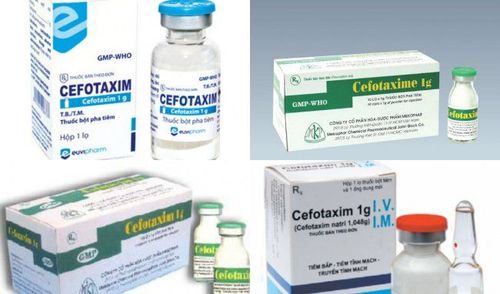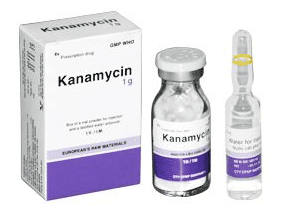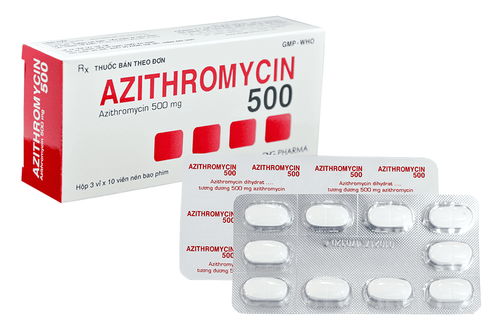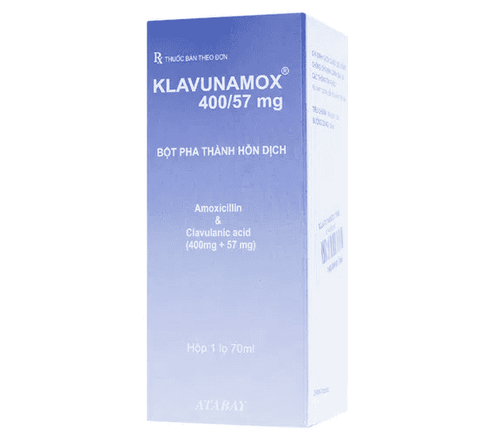This is an automatically translated article.
Piperacillin is a broad-spectrum penicillin antibiotic, belonging to the beta-lactam family. Piperacillin is bactericidal against aerobic and anaerobic, Gram-negative and Gram-positive bacteria by inhibiting bacterial cell wall synthesis. The following article provides you with information about the uses and usage of Piperacillin 2g.
1. Uses of Piperacillin 2g
Piperacillin is a broad-spectrum penicillin antibiotic, belonging to the beta-lactam family. Piperacillin inhibits bacterial cell wall synthesis, has a bactericidal effect against Gram-positive and Gram-negative aerobic and anaerobic bacteria. Piperacillin has antibacterial activity similar to ticarcillin and carbenicillin but has a broader spectrum of activity against Gram-negative bacteria, including Klebsiella pneumonia. Piperacillin has greater in vitro activity, especially against Enterobacter and Pseudomonas aeruginosa, against Gram-positive bacteria Enterococcus faecalis, Bacteroides fragilis.
Gram-positive cocci are very sensitive to Piperacillin, have Streptococcus, Enterococcus, anaerobic cocci, Clostridium perfringens, Piperacillin-resistant penicillinase-producing staphylococci.
Gram-negative aerobic bacteria are very sensitive to Piperacillin, including E. coli, Enterobacter spp., Proteus mirabilis, Proteus indol positive, Pseudomonas, Serratia, Salmonella, Shigella, strains of Citrobacter spp., Haemophilus influenzae that do not produce beta-lactamases. , Meningococcus, Gonococcus. Bacteria that are moderately or well sensitive to Piperacillin, including Acinetobacter, Bacteroides, Klebsiella and Fusobacterium spp.
Piperacillin is susceptible to beta-lactamase reduction. Piperacillin resistance may be due to beta-lactamases and chromosomal alterations that diminish the effectiveness of piperacilin. Therefore, the combination of piperacillin with a beta-lactamase inhibitor such as Tazobactam enhances the effect of Piperacillin. Piperacillin in combination with the beta-lactamase inhibitor Tazobactam is active against Gram-negative and Gram-positive aerobic and anaerobic bacteria, including Piperacillin-resistant beta-lactamase-producing bacteria.
Methicillin-resistant Staphylococci, Chlamydia trachomatis, Xanthamonas maltophilia are not sensitive to Piperacillin in combination with Tazobactam. Resistance has been demonstrated in Pseudomonas aeruginosa during treatment with Piperacillin, particularly when Piperacillin is used alone. There may be cross-resistance with other Pseudomonas-resistant penicillins.
2. Indications and contraindications of Piperacillin 2g
2.1. Indications Piperacillin 2g is indicated in cases of infections caused by bacteria sensitive to Piperacillin, especially Pseudomonas: bacteremia, severe infections, acute and chronic respiratory tract infections, biliary tract infections, Skin and soft tissue infections, uncomplicated gonorrhea caused by penicillin-sensitive gonococcal bacteria, complicated urinary tract infections. In case of systemic infections caused by Pseudomonas or patients with neutropenia, use Piperacillin in combination with Aminoglycosides for treatment. Piperacillin 2g is also indicated in infections after abdominal and uterine surgery. Piperacilin is combined with Tazobactam in the treatment of hospital-acquired pneumonia caused by S. aureus, Acinetobacter baumanii, H. influenzae, Klebsiella pneumoniae; treatment of intra-abdominal infections caused by E. coli, Bacteroides fragilis, B.vulgatus, B. ovatus. 2.2.Contraindications Allergy or hypersensitivity to penicillins, cephalosporins, beta-lactamase inhibitors (Piperacillin combined with tazobactam).
3. How to take Piperacillin 2g
3.1 How to take Piperacillin 2g is injected as sodium salt. Dosage is calculated according to Piperacillin; 1.04 g Piperacillin sodium is equivalent to about 1g Piperacillin. Piperacillin 2g can be administered intravenously slowly for 3-5 minutes, intravenously for 20-40 minutes, or deep intramuscular injection. Do not inject more than 2g once intramuscularly for adults or more than 0.5g for children. Intravenous injection: mix at least 5ml of distilled water into 1g of Piperacillin for injection. Intravenous infusion: 1g Piperacillin mixed with at least 5ml distilled water, then mix this suspension with infusion solution to 50ml for infusion within 20-40 minutes. Deep intramuscular injection: 1g Piperacillin mixed with 2ml distilled water or 0.5-1% lidocaine solution (without epinephrine) to achieve a concentration of 1g/2.5ml. Diluent suitable for mixing Piperacillin 2g: sodium chloride 0.9%; glucose 5%; 5% glucose solution and 0.9% sodium chloride solution; Ringer lactate solution; glucose 30%; dextran 6% in 0.9% sodium chloride solution; mannitol 20%; distilled water for injection.
Piperacillin 2g is mixed immediately before use, the remaining solution after use must be discarded. Reconstituted Piperacillin 2g solution remains chemically stable for at least 24 hours at room temperature or 48 hours at 4oC.
3.2 Dosage Adults
Severe or complicated infections: Intravenous 200 - 300 mg/kg/24 hours; The usual dose is 3-4g, every 4-6 hours/time. In case of severe, life-threatening infections caused by Klebsiella or Pseudomonas, the daily dose is not less than 16g, the usual dose is 2-4g intravenously, every 4-6 hours/time, the maximum dose is 24g/day. . Acute cholangitis: 4g IV every 6 hours. Malignant otitis externa: 4-6g intravenously, every 4-6 hours in combination with tobramycin. Mild or uncomplicated infections: 100-125 mg/kg/day intravenously, the usual dose is 2g/time, every 6-8 hours or 4g/times every 12 hours. Can be used intramuscularly 2g/time, every 8-12 hours/time. Uncomplicated gonorrhea: a single dose of 2g intramuscularly, probenecid can be taken orally 30 minutes before piperacillin injection. Prevention of infection in surgery: intravenous dose of 2g immediately before surgery, then use at least two more doses, each dose of 2g 4-6 hours apart; medication within 24 hours of surgery. Children
Children from 1 month to 12 years old: for mild and moderate infections, the usual dose is 100 - 150 mg/kg/24 hours, divided into 4 times/day; Severe infections use 200-300 mg/kg/24 hours, divided doses 4-6 hours apart.
Newborns (0 - 1 month old), adjust the dose as follows:
Newborns < 7 days or weighing less than 2000g: 150mg/kg/day, divided into 3 doses/day. Neonates > 7 days or weighing over 2000g: 300mg/kg/day, divided into 3-4 times/day. Other subjects
Adults with renal impairment: Adjust dose of Piperacillin 2g based on Creatinine clearance:
Creatinine clearance 41 - 80 ml/min: dose 4g/time, 8 hours apart (no dose adjustment). Creatinine clearance 20-40 ml/min: dose 3-4g/time, every 8 hours. Creatinine clearance < 20 ml/min: dose 3-4 g, every 12 hours. Patients on hemodialysis: dose 2g/time, 8 hours apart; Use 1g immediately after dialysis. Children with renal impairment: Dosage and injection interval depend on plasma drug concentration. Children with severe urinary tract infections: 100 - 150 mg/kg/24 hours intravenously. 3.3 Overdose Piperacillin 2g and management Adults using doses of Piperacillin 24g/day showed no harmful effects. Symptoms of overdose are usually motor excitability or convulsions. In this case, anticonvulsants such as diazepam and barbiturates can be used.
4. Undesirable effects when using Piperacillin 2g
When using Piperacillin 2g, some of the following undesirable effects may be encountered:
Whole body: fever, allergic skin rash, pain and erythema after intramuscular injection. Anaphylactic shock is rare. Blood: eosinophilia, leukopenia, agranulocytosis, transient neutropenia. Circulatory: thrombophlebitis. Gastrointestinal: nausea, diarrhea, pseudomembranous colitis. Liver: reversible increase in transaminases. Skin: erythema multiforme, Stevens - Johnson syndrome, urticaria. Urology: interstitial nephritis.
5. Some notes when using Piperacillin 2g
Caution should be taken when using Piperacillin 2g in patients with impaired renal function. In case the patient has symptoms of severe and persistent diarrhea while taking Piperacillin, antibiotic-induced pseudomembranous colitis should be considered. Precautions for use and dosage when using Piperacillin 2g in infants and children. Bleeding may occur in patients treated with beta-lactam antibiotics; especially in patients with renal failure. If thrombocytopenia or antibiotic-associated bleeding occurs, the drug should be discontinued and appropriate treatment instituted. Pregnant women: Piperacillin 2g can be used during pregnancy. Lactation: Piperacillin may be excreted in low concentrations into breast milk. The mother during the time of taking the drug can continue to breastfeed, but should be cautious and closely monitored.
6. Piperacillin 2g . drug interactions
Aminoglycosides and Piperacillin have a synergistic effect, but when used separately, these two drugs need to be injected. Piperacillin can be used in combination with beta-lactamase-resistant penicillins, but Piperacillin should not be used in combination with cefoxitin in the treatment of infections caused by Pseudomonas. Vecuronium: Piperacillin prolongs the action of the drug, caution should be exercised when Piperacillin is used in the prophylaxis of bacterial infections during surgery using vecuronium or a similar neuromuscular blocker. Metronidazol: need to be injected and taken separately when used in combination with Piperacillin, do not mix drugs. Piperacillin is a broad-spectrum penicillin antibiotic, belonging to the beta-lactam family. Piperacillin is bactericidal against aerobic and anaerobic, Gram-negative and Gram-positive bacteria by inhibiting bacterial cell wall synthesis. To ensure the effectiveness of treatment and avoid unwanted side effects, patients need to strictly follow the instructions of the doctor, professional pharmacist.
Follow Vinmec International General Hospital website to get more health, nutrition and beauty information to protect the health of yourself and your loved ones in your family.
Please dial HOTLINE for more information or register for an appointment HERE. Download MyVinmec app to make appointments faster and to manage your bookings easily.













